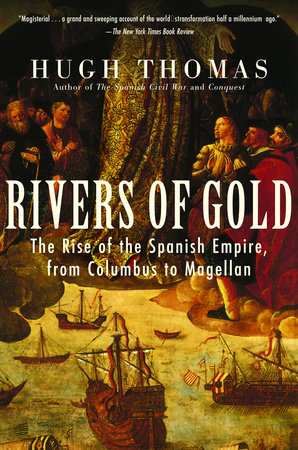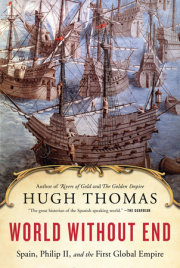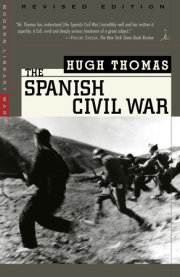Chapter 1
"This city is a wife,
whose husband is the hill"
Stay awhile here on the terrace of the Alhambra and look about you.
This city is a wife, whose husband is the hill.
Girt she is by water and by flowers
Which glisten at her throat,
Ringed with streams; and, behold the groves of trees which are the wedding guests,
Whose thirst is assuaged by the water-channels.
The Alhambra sits like a garland on Granada's brow,
On which the stars are entwined,
And the Alhambra (may God preserve it!)
Is the ruby set above that garland.
Granada is the bride whose headdress is the Alhambra
And whose jewels and adornments are its flowers.
Ibn Zamrak, c. 14501
The Spanish army and the court lay in Andalusia, at Santa Fe, a new white-painted town that King Fernando and Queen Isabel had built to serve their siege of Granada, the last Islamic city in Spain to resist the Christians. It was the autumn of 1491. Those who know the fertile plain, the vega, in which Granada stands, at that season of the year will recall the slight chill on the fine mornings, the blue sky at noon, and the sparkle from the high sierra to the south, with its near-perpetual snow.
Santa Fe had been constructed by soldiers, quickly, in eighty days, in the shape of a gridiron within a cross, four hundred paces long by three hundred broad. Coincidentally, and after Fernando's decision to build, a fire had destroyed the old Spanish camp nearby. The Queen had narrowly escaped being burned in her tent and had had to borrow clothes from a friend. Several villages had been razed by soldiers to provide material for the new town. But Santa Fe now had a mayor, a courtier who had been among the heroes of an earlier stage of the war against Granada: Francisco de Bobadilla, a comendador (commander) of the military Order of Calatrava, one of the semireligious brotherhoods that had played such a part in the Christian reconquest of Spain. Bobadilla was also maestresala (steward) of the monarchs and brother of the Queen's best friend, Beatriz de Bobadilla.3 There were now stables for a thousand horses. The intimation of permanence, combined with the speed with which Santa Fe had been built, constituted a good psychological weapon against the Muslims.
Santa Fe is still today a small, shining, white town. One can stand in the square before the church of Santa María de la Encarnación, built in the sixteenth century, and gaze, in four directions, down whitewashed streets. Gates surmounted by chapels stand at the center of each of four old external walls, which, in their gleaming paint, seem at once new and immortal. Over the entrance to the church a lance has been sculpted, accompanying the words "¡Ave María!," to recall a Christian knight, Hernán Pérez de Pulgar, "he of the doughty deeds," who, one night the previous winter, had gone to Granada by a secret tunnel in order to pin, with his dagger, a parchment bearing those same words over the entrance to the main mosque.
Pulgar's action recalled that the conflict against the Muslims in which the Christians were engaged was for many a noble war in which men wanted to be seen to be brave. Most of the aristocracy of Spain had taken part, and many were competing not only for the conquest of the Muslim city, but also for fame.
Granada, 2,500 feet above sea level, is six miles to the east of Santa Fe. From the Spanish camp, the city looked to be a congeries of palaces and small houses, provided with water from the nearby Sierra Nevada by the two rivers, the Xenil and the Darro, which were said to wed, as well as meet, just short of the city. "What has Cairo to boast of, with her Nile, when Granada has her thousand Niles?" Muslim poets asked. From tall minarets, above mosques that the Christians believed would soon be converted into churches, the muezzin called the faithful to prayer; but the Spanish monarchs, eight years before, had obtained from the tolerant Genoese Pope, Innocent VIII, the right of patronage to all the churches and convents established in conquered territory. Spanish soldiers on reconnaissance could look into the besieged city: rest their eyes on the Arch of the Ears, and on the Plaza del Arenal, not to speak of the Bibarrambla, a quarter of artisans, and a densely built residential district, El Albaicín.
The city was more like those of Muslim North Africa than of Christian Spain, as one or two experienced Spanish soldiers would have been able to recall. The beauty of Granada's blue tiles could not be seen from afar; nor could the Christians see such mottoes in Arabic as "Be not the indolent one" or "There is no conqueror but God," nor even "Blessed be He who gave to the Imam Mohammed a mansion which exceeds all others in beauty." But the rumor of the wealth in Granada was diffused in the Christian camp. Some Castilians thought that there was gold in the River Darro; while the more hardheaded Spanish commanders knew that Granada's principal product was silk, sometimes brought raw from Italy but usually deriving from the mulberries of the valley of the Alpujarras to the south, beyond the Sierra Nevada, and sold in many colors in the market of la alcaicería.
Higher up, there was the Moorish kings' lovely, rambling palace of the Alhambra, mostly built in the thirteenth and fourteenth centuries, much of the work performed by Christian slaves. Again, from the Spanish camp, one could not see the multitude of arches leading there from one magnificent room to another. But one could glimpse the strong towers and the wooden galleries that linked them. Higher still, at the end of a path bordered by myrtle and bay, there were the beautiful gardens of the Generalife, full of remarkable fruits, where splendid fountains flowed, or so the spies said.
In the town, the besiegers could observe too the strange apparel of a multitude of men and women in Muslim dress, since the latter, in burkas, appeared to be wearing shrouds, these covering not just their bodies but most of their faces. At night, they resembled ghosts. Here, too, were refugees who had fled from the Christians after earlier battles, from other cities, but also people who had refused to live as subject Muslims (mudéjares), under the peace terms offered in such places as Huéscar, Zahara, Malaga, Alcalá de los Gazules, and Antequera.
At that time, only a few of their counterparts, Christians who had survived through the generations of Mohammedan rule, mozárabes, lived in Granada; most of those who once had lived there had been deported, being perceived by the rulers as a potential military threat. There were some Jews in Granada, but their customs, like their food and official language, were largely Muslim. They fitted better into the life of the city than the Christians.
Granada was the capital of an emirate that had come into being in the thirteenth century, in the shadow of the fall of other Muslim monarchies in Córdoba, Valencia, Jaén, and Seville. The emirs were from a family, the Nasrids, which had emerged in the 1240s when a clever general from the little town of Arjona, in central Andalusia, seven miles south of Andújar, made himself a monarch, as Muhammad I. He made peace with the Christians, sent five hundred men to help King Fernando capture Seville, and paid a tribute to the Castilians. That relation continued indefinitely: Granada sent gold to Castile until 1480 in order to be allowed to continue her separate being, though whether that constituted what the Christians called "vassaldom" is open to argument.
The city under siege in 1491 was the last stronghold of a Muslim empire that had once stretched to the Pyrenees and beyond, and had included such northern Spanish lands as Galicia and, for a time, Asturias. Once the Muslim civilization in Spain had been rich, sophisticated, and scholarly, and Castilians, like other Christians, had learned much from it. But European civilization no longer looked to the Muslim world for inspiration. Instead, Granada had been chosen as a redoubt, both religious and military, by the Nasrids. Though its politics had been scandalous, murder and treachery being normal in the ruling family, its mullahs had been austere. Muslims elsewhere had been enjoined to flee there by their leaders: "By God, O Muslims, Granada has no equal, and there is nothing like service on the frontier during the Holy War. . . . Al-Andalus . . . where in the words of the Prophet, the living are happy and the dead are martyrs, is a city to which, as long as it endures, Christians will be led as prisoners. . . ."
Despite such advice, however, many Muslims lived in cities in Christian Spain in morerías (Muslim ghettoes): 30,000, say, in Aragon, chiefly in the valley of the Ebro; perhaps 75,000 in Valencia; and 15,000 to 25,000 in Castile. Their condition was the same, whether they were the victims of recent conquests or whether their ancestors had surrendered to Christian Spain in the thirteenth century or even before. If the Christians captured a Muslim town after a battle, the citizens would be driven out; but when a city surrendered without a fight, they would often settle to become mudéjares. The latter decision seemed a danger for Islam. A Muslim lawyer wrote: "One has to beware of the pervasive effect of their [Christian] way of life, their language, their dress, their objectionable habits and their influence on people living with them over a long period of time, as has occurred in the case of the [Muslim] inhabitants of Ávila and other places, for they have lost their Arabic and, when the Arabic language dies out, so does devotion." But then it was also contrary to Islamic law for a state to pay tribute to a Christian king, as Granada had done for most of her existence.
Christian practices varied. Navarre, an independent kingdom in the north, astride the Pyrenees, was particularly tolerant of Islam, the south of Spain less so. The use of Arabic was accepted in Valencia longer than anywhere else. Most Christian authorities in Castile, however, permitted Muslim customs. The prevailing legal code, of Alfonso X, Las Siete Partidas, had specified that "the Moors should live among the Christians in the same manner as . . . the Jews, observing their own laws and causing no offense to ours. . . . They ought not to have their property stolen from them."
Many Christian leaders of the Spanish army at Santa Fe knew the Arab world well. Some had divided loyalties. A few knights in the Christian army were of Muslim descent, while converts or traitors had played a part in these wars for many years. The conflicts during the last generation had ensured contacts, many of doubtful respectability; and one famous Muslim family, the Abencerrajes, much spoken of in ballads, had taken refuge with the Duke of Medina Sidonia in the 1460s.
In Granada, a recent monarch, Abú el-Hassan, had made a beautiful Christian prisoner, Isabel de Solís, into his favorite bride under the name of Zoraya. Hence, naturally, there was hatred between the two families of Abú el-Hassan's wives.
The war against Granada had sometimes looked a well-matched one; the Spaniards had suffered defeats. But it now seemed certain that the emirate would soon yield, and the war end with a Christian triumph. After nearly eight hundred years, the entire peninsula would be free from Muslim rule. The victory would, if it came, derive from many things: the Muslims' farming in the vega had been ruined by repeated Spanish raids, talas, carried out after 1482 from the newly conquered city of Alhama. These had destroyed wheat and olives. Other Castilian pressure had also been effective. City after city had fallen, even high-walled Ronda, which had been reputed impregnable; while, in 1487, the surrender to Castile of the port of Malaga seemed to have decided the war. Thousands were captured, hundreds enslaved.
Granada still had an outlet to the sea over the mountains of the south, through the fishing village of Adra, and so, in theory, reinforcements from North Africa could be obtained. But that help did not come. The Muslim emirates in the Maghreb were friendly to the Nasrids but were at that time ineffective. Only one village outside Granada now provided fruit and vegetables, that of Alfacar, four miles away to the east on the slopes of the Sierra de Huétor. The ambivalent Emir, Boabdil, had once been a prisoner of the Christians, and though he had broken the terms of his family's agreement with the Spaniards at least once, his loyalty to his own people was now questionable. Similar divisions within Granada had played a part in the Christian victories, especially after 1485, when the Spanish armies had cut the emirate into two parts.
It was not immediately obvious why the Christian campaign against Granada had been embarked upon in the early 1480s. Here were about half a million Muslims, whose rulers surely could have been bullied into reviving the payment of tribute, which they had paid fairly consistently for 250 years. There might be a need to wipe out the memory of 1481, when Mullay Hassan, uncle of King Boabdil, had seized the Christian town of Zahara (while its governor, Gonzalo Saavedra, had been carousing in Seville) and put much of the town to the sword. But revenge had surely been accomplished by Christian victories such as those in Alhama, Lucena, and Ronda.
At all events, a decision to absorb Granada into Castile had been taken at the Cortes (parliament) of Toledo in 1480. The chronicler Alonso de Palencia, who knew Queen Isabel well, believed that she and her husband, King Fernando, had been determined to bring to an end the independence of Granada from the very beginning of their reign. They had made truces with the emirate in the 1470s when they had domestic problems to settle, but when these were resolved, they instructed Diego Merlo, a bureaucrat of Seville, to embark on an offensive against Granada.
The truth is that that emirate had in the thirteenth and most of the fourteenth centuries been seen by the Christians as just a lordship for Muslims within Castile. The rulers of Granada would sometimes send soldiers to fight for the king of Castile. But it seemed recently that they had taken advantage of the civil wars in Castile and, during one of Isabel's truces, had broken the old links. Now was the time to prevent such things recurring (this was Fernando's explanation to the Mamelukes of Egypt). The wealth of Granada, though overestimated, was also attractive to the Christians, even if much of it depended on Genoese merchants (the Centurioni, the Palavicini, the Vivaldi) as well as the Datini of Prato, whose trading had linked Muslim Spain to North Africa and thence to Italy, and who might not remain there after the military defeat of the last Nasrids. The Genoese were, of course, Christian, but their entrepreneurs wore that faith lightly.
Copyright © 2004 by Hugh Thomas. All rights reserved. No part of this excerpt may be reproduced or reprinted without permission in writing from the publisher.









